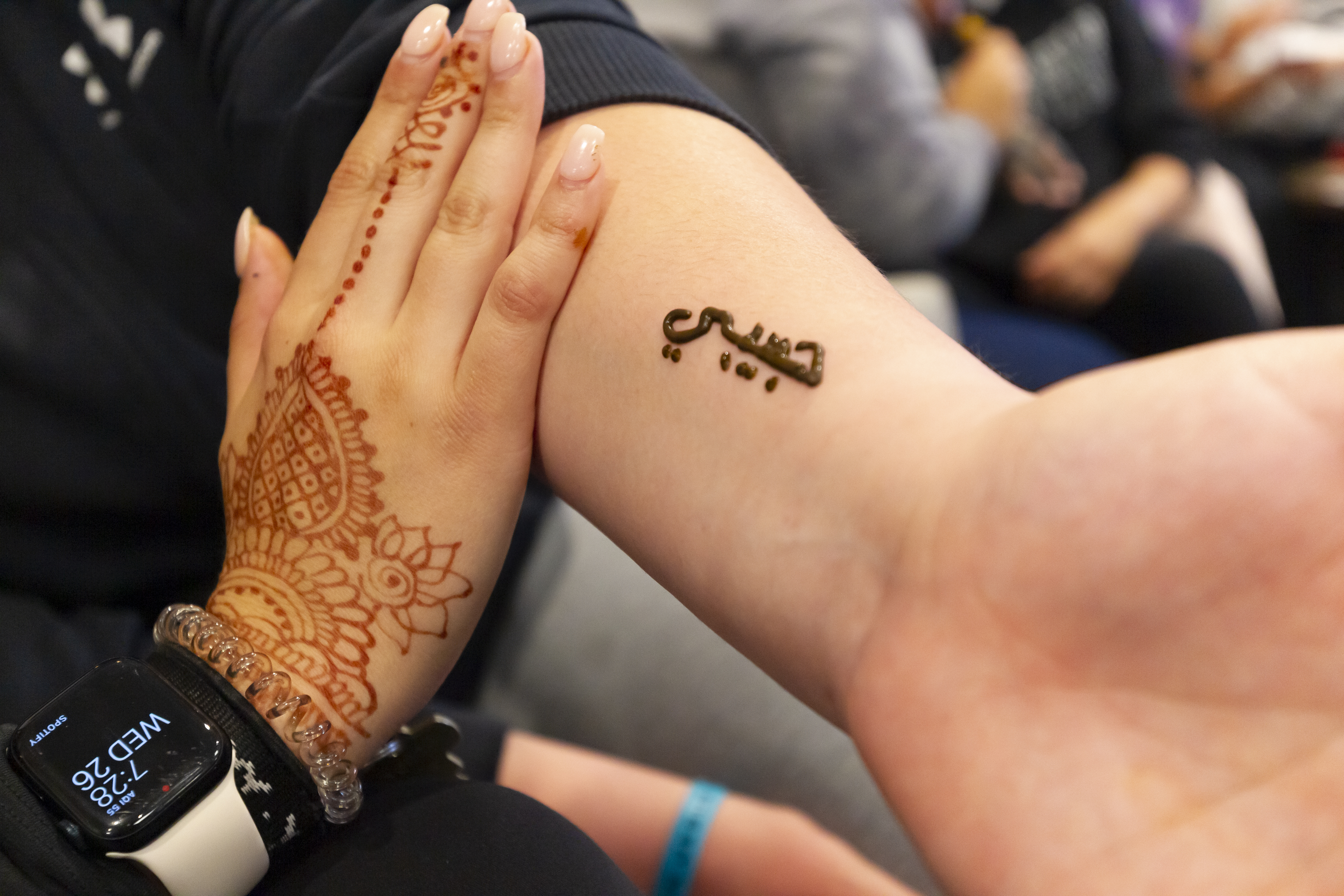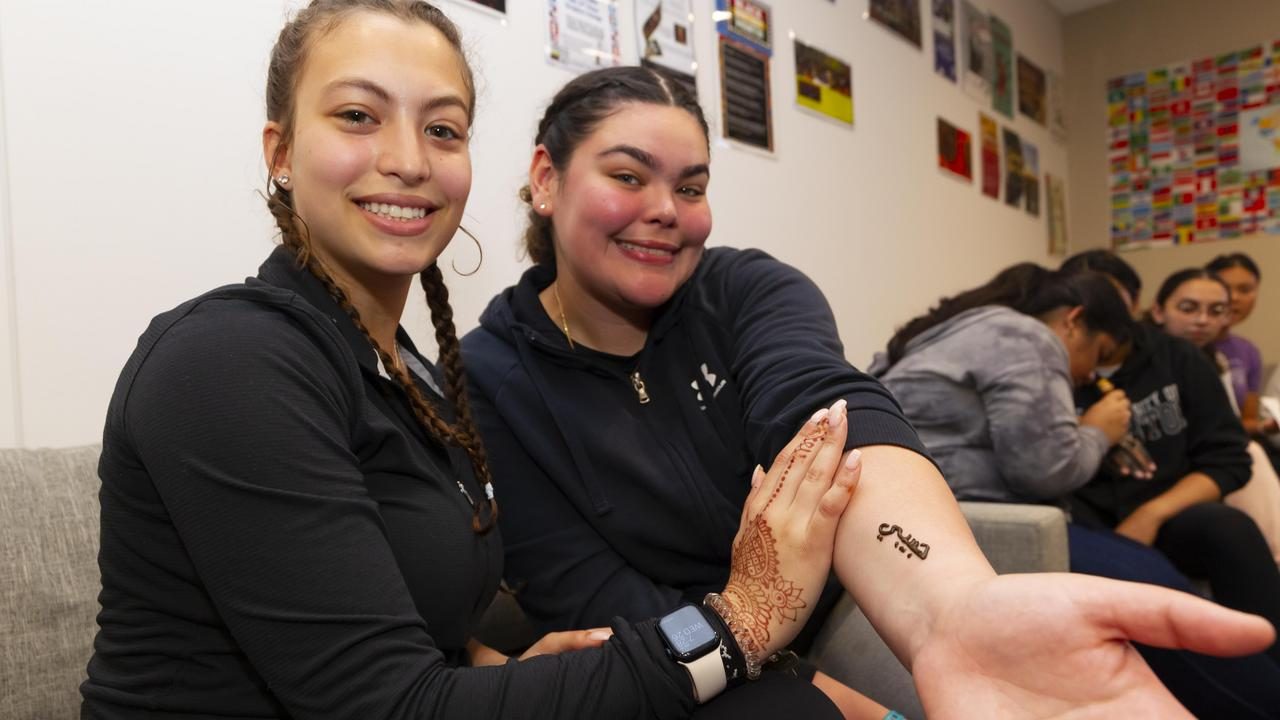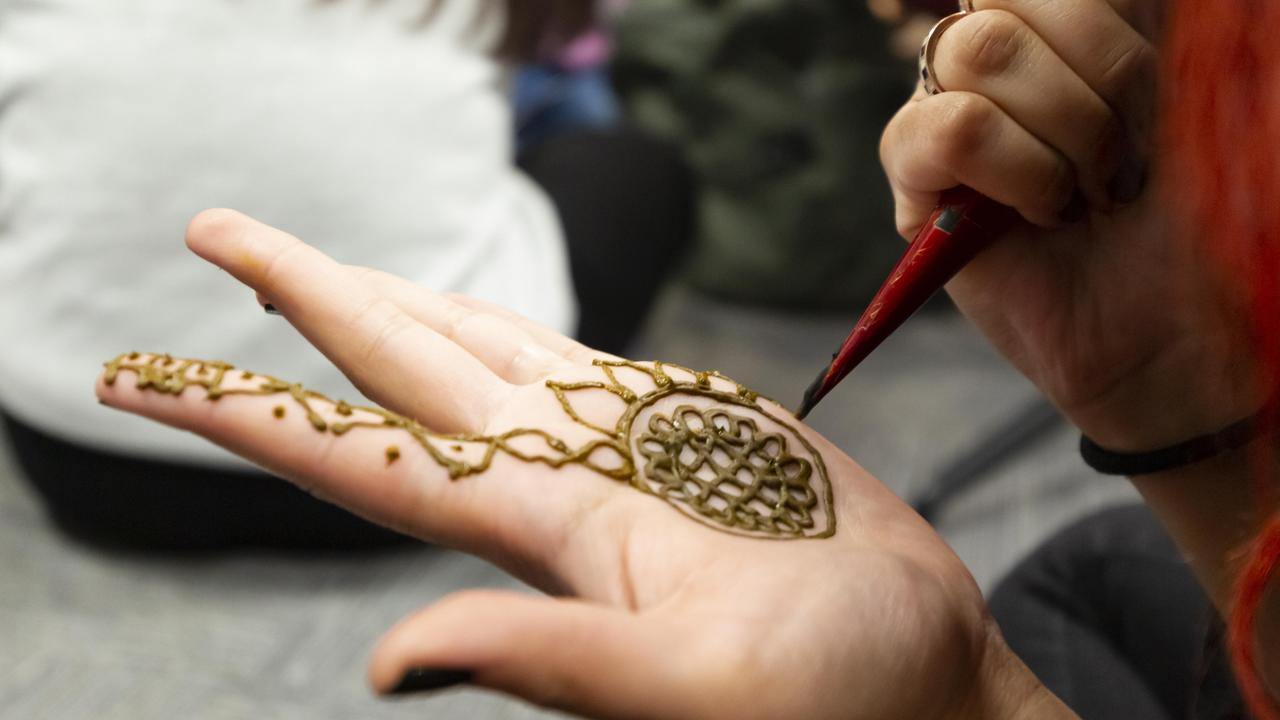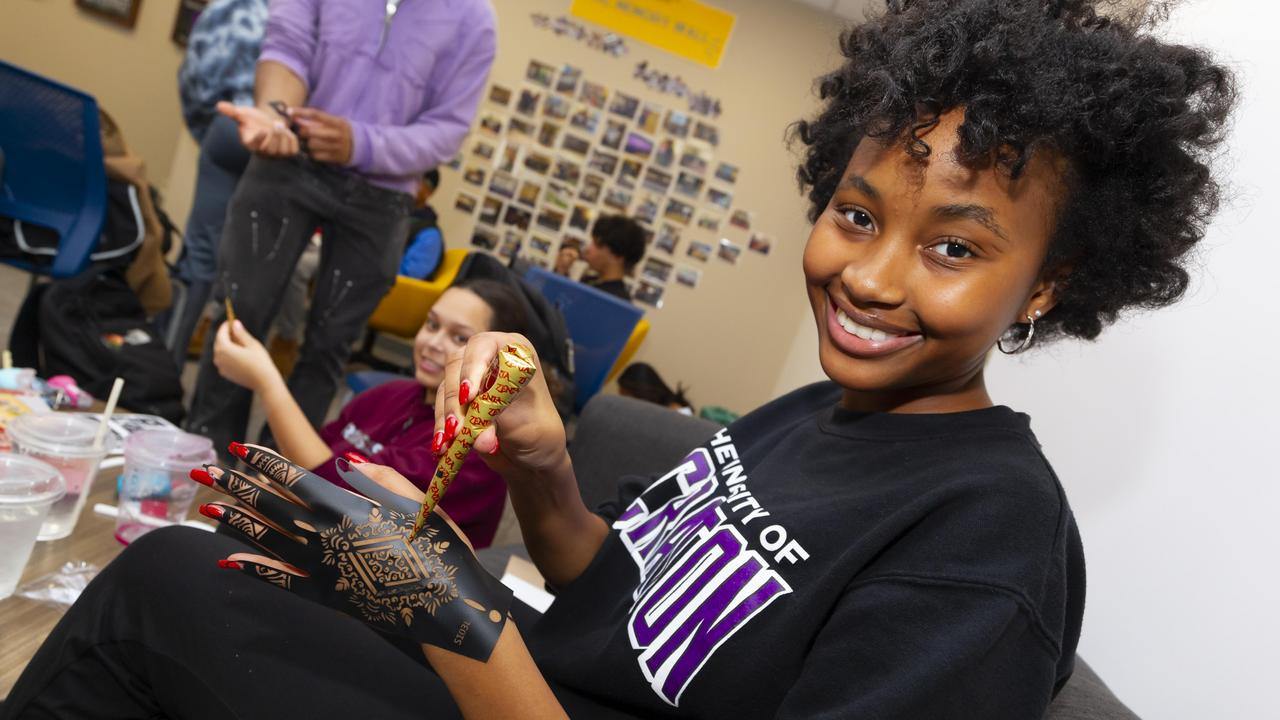Expressing Creativity and Celebrating Heritage with Henna
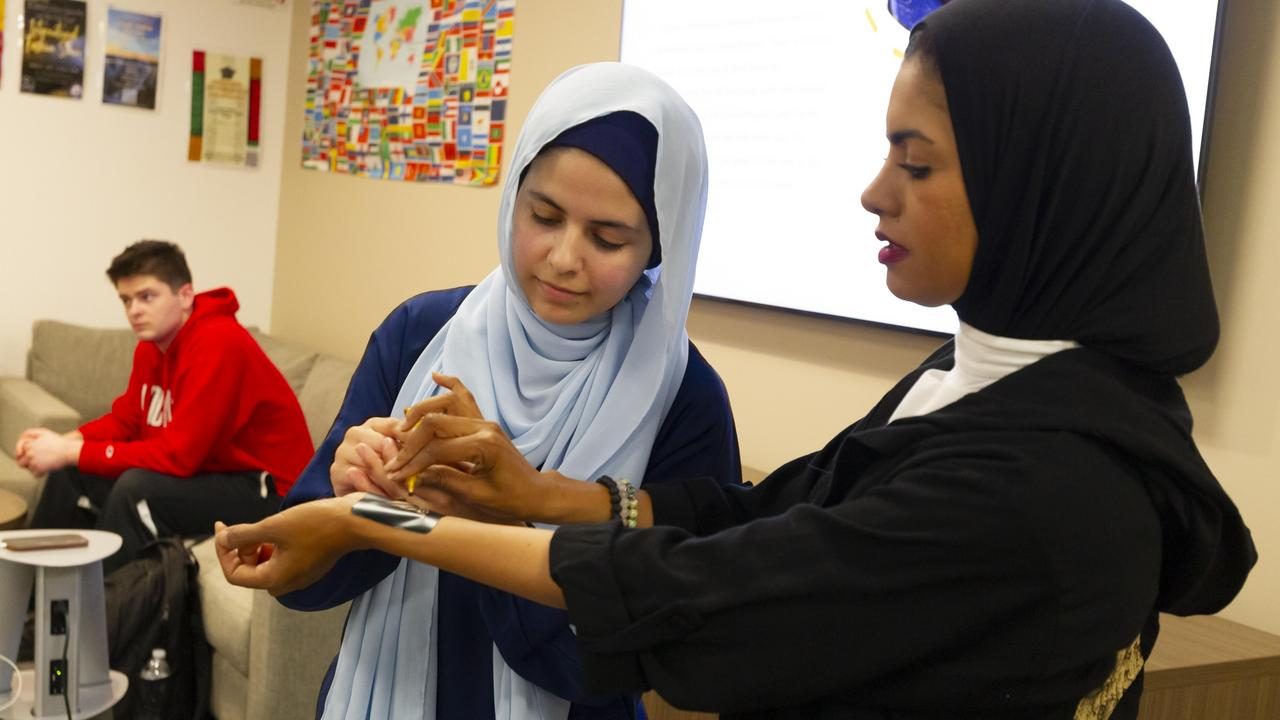
Nearly 50 members of The University of Scranton community expressed their creativity through richly-colored designs at a recent "Henna and Tea" event, one of several April events sponsored by the Multicultural Center in celebration of Arab American Heritage Month.
"The guests made the event enjoyable as they were having fun with the henna and didn't want to leave," said Badoor Albuloushi, Ph.D., visiting faculty in the Department of World Languages and Cultures who, along with Naveen El-dabsheh, hosted the April 16 event.
"It is easy to apply. ...You get the henna cone, draw the design you like on your skin. Another option is to use the henna stencil with many beautiful designs and shapes. Students tried both freehand and stencils," said Dr. Albuloushi.
"We gave a presentation about henna, its origin and use in the Arab world. Also, we talked about tea and Arabic coffee," said Dr. Albuloushi, referencing the evening's activities, which also included a sampling of Arabic coffee, tea and sweets.
Dr. Albuloushi explained the expediency of the process, noting that after application, the henna should be allowed to set for 20 minutes or until it completely dry. Afterward, the dry henna should be removed, but not rinsed with water until a few hours later.
The outcome: richly-colored designs.
"The color will be pale at first, but over the next 24 hours it will darken. The beautiful henna design can stay up to two weeks if you care for it by moisturizing and do not exfoliate it. The more you leave it, the richer the color," said Dr. Albuloushi.
Read about another recent cultural program that Dr. Albuloushi hosted to educate the University community about her native country, Kuwait, at the following link: https://news.scranton.edu/articles/2023/03/kuwait-cultural-program-2-23.shtml


